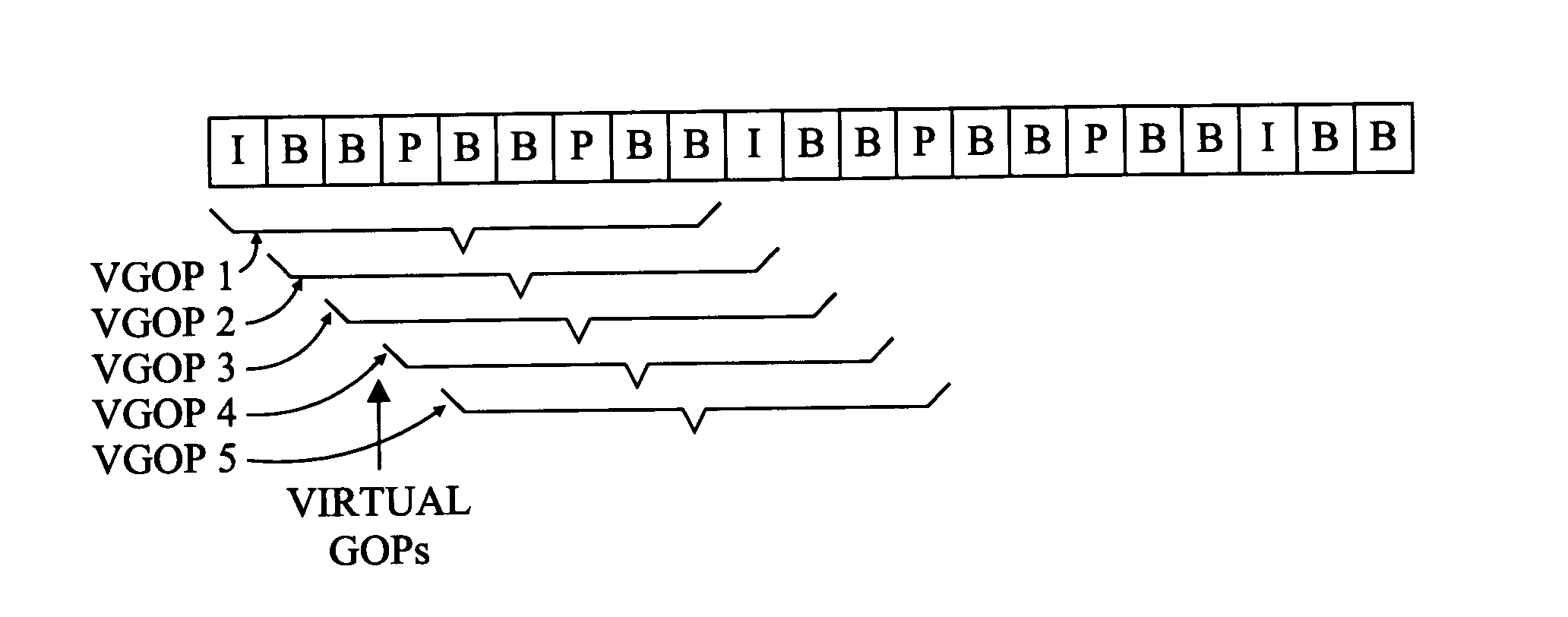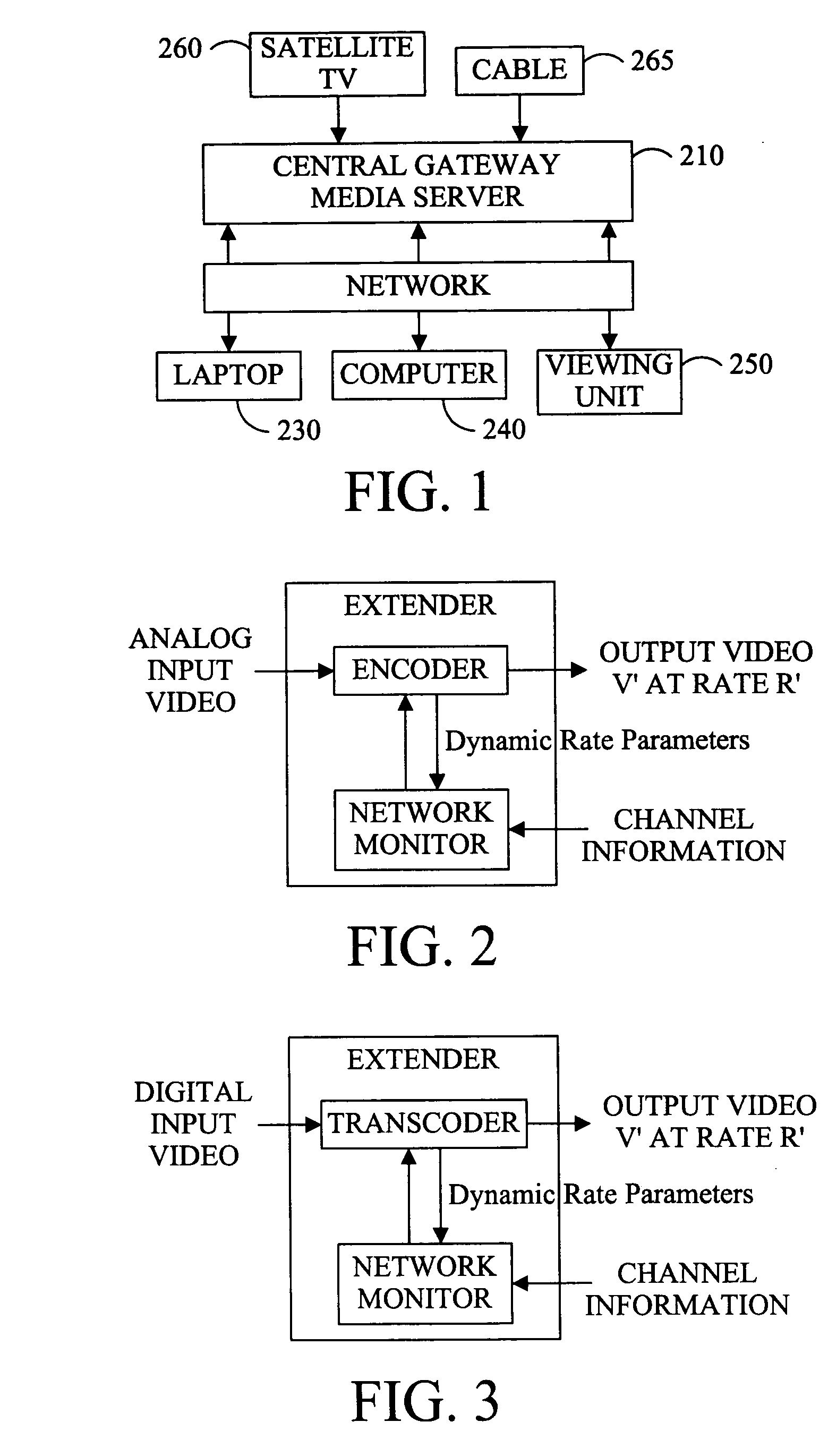Wireless video transmission system
a video transmission system and wireless technology, applied in the field of wireless video transmission systems, can solve the problems of reducing the effectiveness of modern television systems, limiting viewer mobility in traditional television systems, and poor reception characteristics
- Summary
- Abstract
- Description
- Claims
- Application Information
AI Technical Summary
Benefits of technology
Problems solved by technology
Method used
Image
Examples
case b
[0103]The weight of a stream may be result of a preference that is related to a content item (such as TV program) that is carried by a particular stream at a particular point in time (see FIG. 16). That is, for the duration that a certain type of content is transmitted over a stream, this stream is assigned a priority such that the distortion of this stream is deemed more severe as an equal amount of distortion in other streams with a different type of content, received by the same or other devices. For instance, the user(s) may decide to assign priority TV programs on the basis of its genre, or other content-related attributes. These attributes, e.g. genre information, about a program can be obtained from an electronic program guide. These content attributes may also be based on knowledge of the channel of the content (e.g. Movie Channel, Sports Channel, etc). The user(s) may for example assign a higher weight to movies, compared to other TV programs such as gameshows. In this case...
case c
[0107]The relative weight of streams may also be set or changed at arbitrary times or on user demand (see FIG. 17).
[0108]Such weighting may be bound to a particular person in the household. For instance, one person in a household may wish to receive the highest possible quality content, no matter what device he / she uses. In this case, the weighting can be changed according to which device that person is using at any particular moment.
[0109]Such weighting could be set or influenced at an arbitrary time, for instance, using a remote control device.
[0110]Such weighting could also be based on whether a user is recording content, as opposed to viewing. Weighting could be such that a stream is considered higher priority (hence should suffer less distortion) if that stream is being recorded (instead of viewed).
case d
[0111]The relative weight of streams may also be set based on their modality. In particular, the audio and video streams of an audiovisual stream may be separated and treated differently during their transmission. For example, the audio part of an audiovisual stream may be assigned a higher priority than the video part. This case is motivated by the fact that when viewing a TV program, in many cases, loss of audio information is deemed more severe by users than loss of video information from the TV signal. This may be the case, for instance, when the viewer is watching a sports program, where a commentator provides crucial information. As another example, it may be that users do not wish to degrade the quality of audio streams containing hi-quality music. Also, the audio quality could vary among different speakers or be sent to different speakers.
Network Characteristics
[0112]The physical and data link layers of the aforementioned networks are designed to mitigate the adverse conditi...
PUM
 Login to View More
Login to View More Abstract
Description
Claims
Application Information
 Login to View More
Login to View More - R&D
- Intellectual Property
- Life Sciences
- Materials
- Tech Scout
- Unparalleled Data Quality
- Higher Quality Content
- 60% Fewer Hallucinations
Browse by: Latest US Patents, China's latest patents, Technical Efficacy Thesaurus, Application Domain, Technology Topic, Popular Technical Reports.
© 2025 PatSnap. All rights reserved.Legal|Privacy policy|Modern Slavery Act Transparency Statement|Sitemap|About US| Contact US: help@patsnap.com



